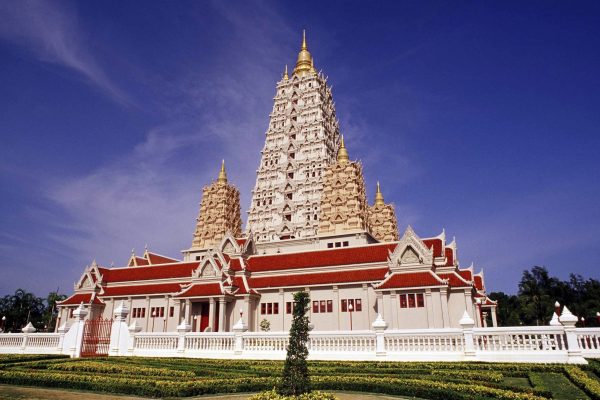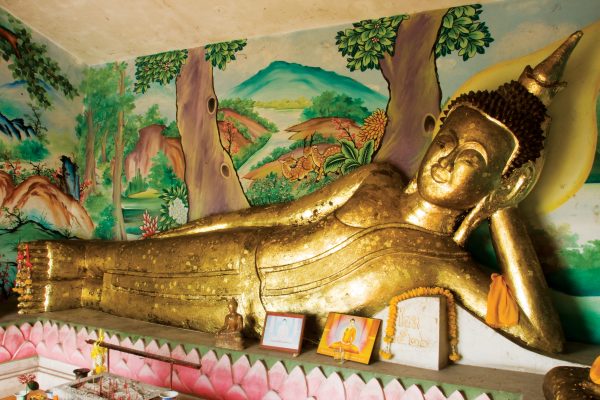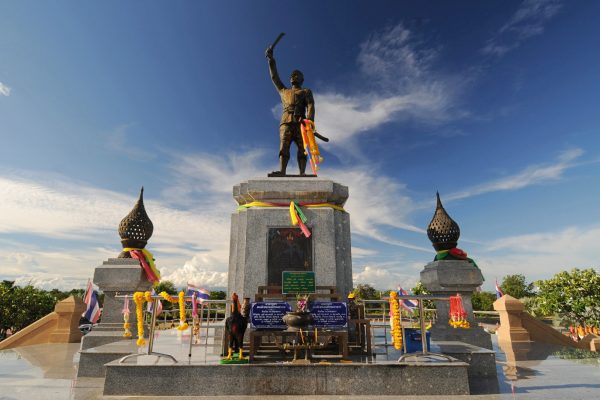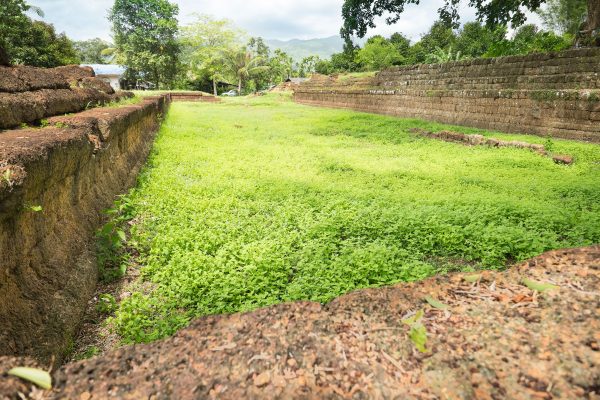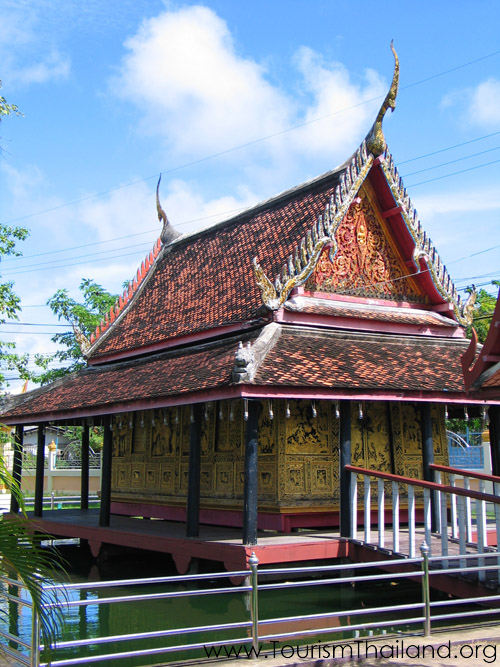
Wat Takat Ngao
Wat Takat Ngao, an ancient religious place aged more than 200 years old, is located at Takat Ngao subdistrict, Tha Mai district. Although the exact period when the temple was built is yet unknown, the official historical document shows that the temple was established in 1827, during the reign of King Nang Klao or Rama III (1824-1851). The legend about the origin of the temple has it that the first abbot (It is not clear whether it is either Luang Pho Khlai or Luang Pho Son.) with a very good command of medical knowledge made a journey to the capital city to provide medical treatments to a royal family member. After the recovery, the royal family member granted a Tripitaka hall to show his appreciation. The given Tripitaka hall which is now surrounded by water is regarded as one of the temple’ highlights. Its architectural style shows that it was built towards the end of King Rama III’s reign. It also assumed that each component has been taken from different places before putting together by wooden tenons. The Tripitaka hall is a rectangular building placed on stilts above ground level. The roof finial has reduced frontal and dorsal roof edges. The gable is gilded and carved with a decorative pattern called Krua Tao and an image of a deity in the middle. It is surrounded by a cloister to block splashing rains. The Tripitaka hall was gradually in a dilapidated condition until the year 2001 that it went under a massive restoration. In 2002, the Fine Arts Department certified Wat Takat Ngao as an archeological site. The Tripitka hall in Wat Takat Ngao is considered both an invaluable artifact and an edifice. It serves as a storage of palm-leaf inscriptions including the Tripitaka, the most sacred and most important Buddhist scripture. The temple also houses several more ancient ruins, such as a wooden carved Buddha image and a wooden pulpit. Tourists can pay a visit to the temple every day including public holidays, free of charge.

